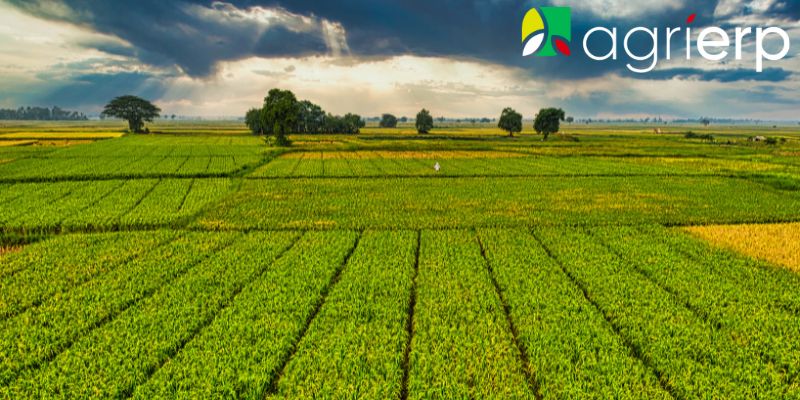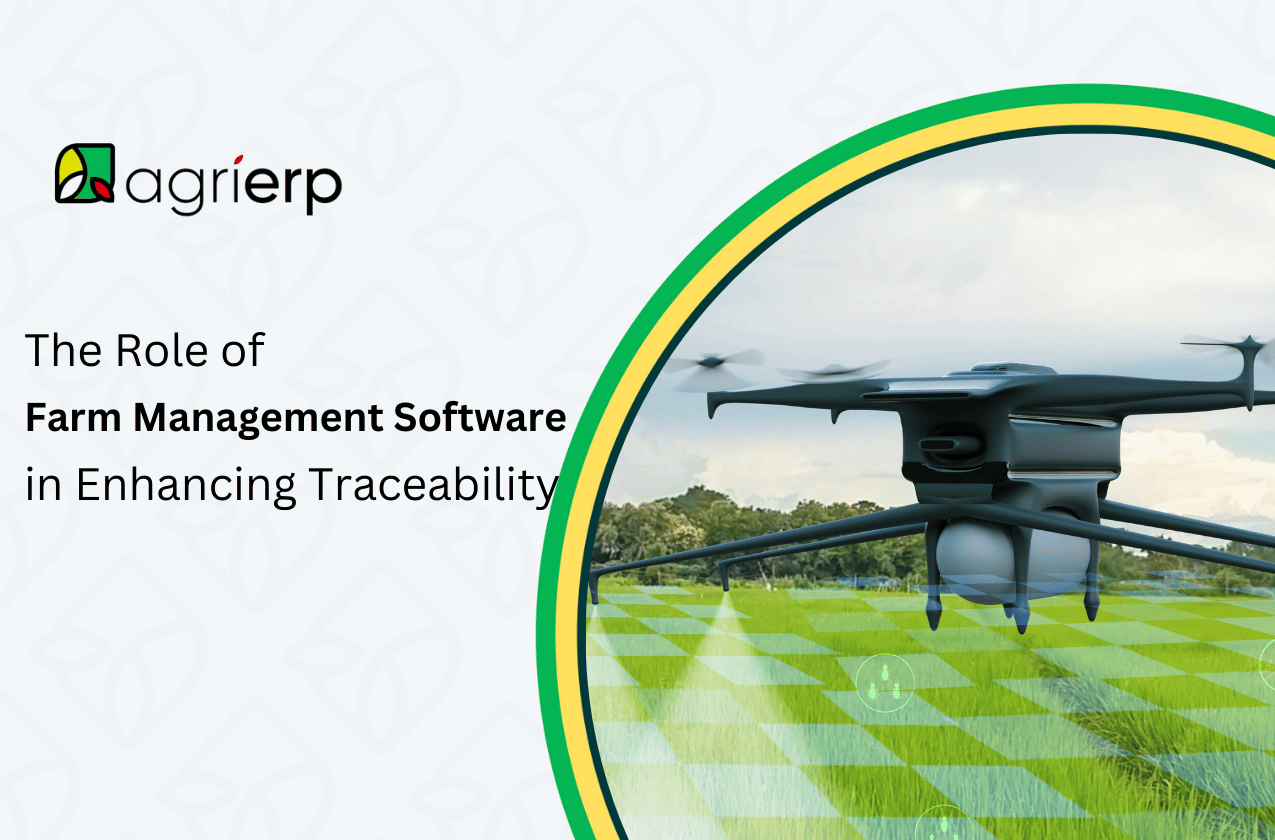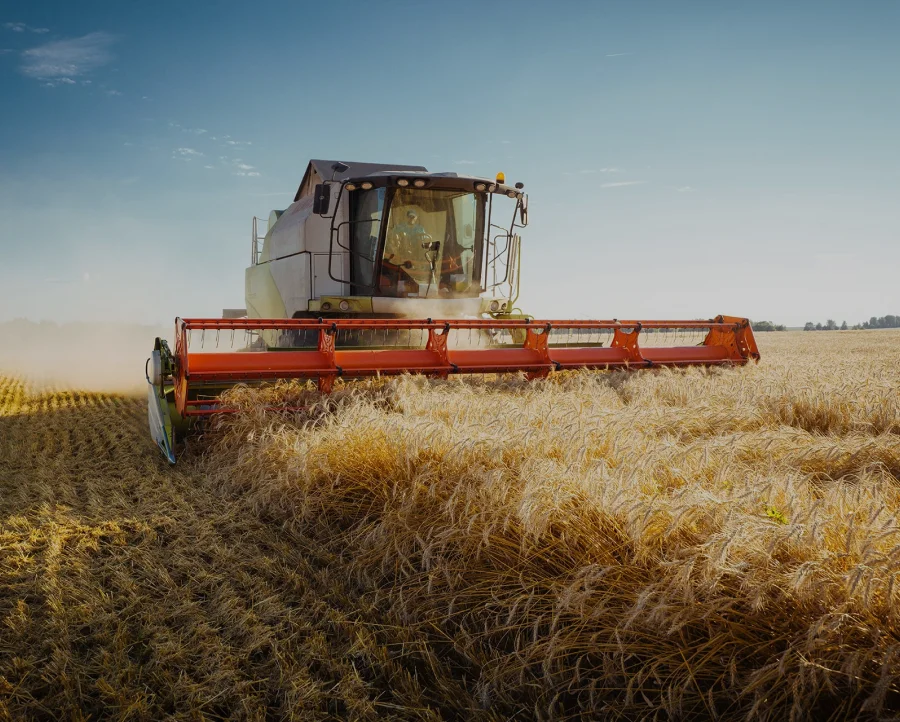As food safety awareness and concerns grow and regulations become strict day by day, the need for food traceability has become mandatory for farmers. Farm traceability software is developed to handle these issues by providing complete solutions that guarantee that every process of agricultural activity is documented and traceable.
This article will explain how farm management software improves traceability and its benefits to agriculture.
Traceability in agriculture means tracking the movement of food products through various stages of production, processing, and distribution. Farm traceability software helps farmers record detailed information at each stage, ensuring transparency. Farmers can meet regulatory requirements, improve productivity, and build consumer trust by using technology.
The Importance of Traceability in Agriculture

Traceability in agriculture is important for numerous reasons. Primarily, it guarantees food safety by enabling farmers to monitor and control each stage of production, from planting to harvesting and distributing.
This is required to prepare for audits and to comply with regulations. Foodborne disease outbreaks and other recent food safety issues have shown the need for traceability to quickly identify and isolate contaminated items.
For instance, the E. coli outbreak linked to romaine lettuce in 2018 highlighted major gaps in traceability. Without a quick traceability system, identifying the source of contamination was difficult, leading to vast recalls and financial losses.
Such incidents show the dire need for good traceability solutions that can prevent and reduce the impact of food safety issues.
Traceability also leads to consumer trust by providing transparency about the origins and handling of their food. These days consumers are highly concerned about the origin of their food. Having detailed traceability can give products a competitive edge.
Consumers prefer products that they know are safe and ethically produced. Traceability also helps in accessing international markets by meeting the criteria of global trade partners who demand high standards for food safety and quality.
How Farm Management Software Enhances Traceability
Let’s examine how farm management software boosts traceability:
1. Centralized Data Management
One of the main features of farm traceability software is the centralization of data. By merging information from various sources such as crops, livestock, and inputs, farmers can have a centralized system that simplifies management. This centralized data approach enhances traceability and improves overall efficiency.
Centralized data management empowers farmers to have a detailed and complete view of their operations. For example, they can track which inputs were used on fields, monitor crop growth, and record harvest dates.
This helps in making timely decisions regarding possible issues. Moreover, centralized data storage reduces the risk of data loss and ensures that all information is easily accessible for audits.
2. Real-Time Tracking
Farm management software tracks data in real time. Farmers may monitor the movement of goods from the field to the customer by this feature. Product integrity and safety are maintained since real-time tracking ensures that issues are quickly identified and rectified.
Using technology like GPS, sensors, and mobile applications is part of real-time tracking. For example, a farmer may monitor the location of a tomato shipment from the farm to the distribution center, guaranteeing that the food is handled properly and reaches its destination on time. If any problems occurs, such as a delay the farmer can handle it right away.
3. Record Keeping and Reporting
Detailed record-keeping and reporting functionalities provided by farm traceability software help in complying with regulatory standards. The software keeps detailed logs of all farm activities, which are required for food audits.
This helps in meeting legal requirements and in building a trustworthy relationship with all stakeholders.
Detailed records include information such as the types of inputs used, the dates of application, and the quantities harvested. These records are vital for traceability and help in tracking the journey of products from the farm to the consumer.
By maintaining accurate and up-to-date records, farmers can quickly respond to any inquiries from regulators or consumers.
Features of Effective Farm Traceability Software
Below are the features of effective farm traceability software:
1. Barcode and RFID Integration
A good farm traceability software includes the usage of barcode and RFID technologies. These technologies help in the easy tagging and tracking of products, thus, every item can be traced throughout its journey. This integration simplifies the traceability process and reduces the chances of errors.
Barcode and RFID tags give a unique identifier to each item, making it easy to track its movement through the supply chain. For example, a barcode on a crate of apples can be scanned at various points along the distribution route, providing real-time updates on its location.
2. Cloud-Based Access
Cloud-based farm traceability software has many advantages, including accessibility, scalability, and security. Farmers can access data from anywhere and anytime, which is useful for managing operations across different locations.
Cloud-based solutions also facilitate collaboration among different stakeholders, such as farmers, distributors, and retailers.
3. User-Friendly Interfaces
A user-friendly interface ensures that all farm staff can easily use the software. Farm workers adopt the system more frequently and the learning process is easier because of its simple layout and straightforward navigation.
User-friendly interfaces include features such as dashboards, visualizations, and simple data entry forms. These features make it easy for staff to enter and access information, reducing the risk of errors and ensuring updated data.
Benefits of Implementing Traceability Software
1. Risk Management
One of the major benefits of farm traceability software is its ability to manage risks. By providing detailed information about every stage of production, the software can identify issues quickly, thus reducing the chances of product recalls.
For example, if a batch of lettuce is found to be contaminated, traceability software can help identify the specific field and inputs used, allowing the farmer to isolate the problem and prevent further contamination.
2. Market Advantage
Traceability can boost the marketability of agricultural products. Consumers these days are seeking transparency in the food they purchase, and being able to provide detailed traceability information can make your products distinguished in the competitive market. This market advantage can lead to higher demand for traceable produce.
For instance, a farm that can provide detailed traceability information for its organic products may attract more consumers who are willing to pay a higher price for products they trust. This competitive edge can help farms expand their market reach and increase their profitability.
3. Operational Efficiency
Compared to manual tracking systems, the use of agricultural traceability software saves time and reduces mistakes by automating numerous steps of the traceability process. Farmers can concentrate more on production and less on administrative tasks.
By reducing the chances of human errors, automated traceability procedures guarantee the accuracy of data. For instance, field workers may quickly and easily record product movement data by using barcode scanners or mobile applications rather than physically recording it. By simplifying procedures, this automation frees up time for more important work.
Challenges in Adopting Traceability Software
1. Initial Cost
One of the common challenges in adopting farm traceability software is the up-front cost. Although initial cost can be high it is crucial to consider the long-term benefits and the return on investment. Usually, the market advantages gained from traceability software outweigh the upfront costs.
To overcome this problem, farms can opt for options such as financing, grants, and subsidies to support the adoption of traceability technology. moreover, working with a software provider to implement a phased approach can help manage costs and ensure a smooth transition.
2. Learning Curve for Staff
Introducing new software often comes with a learning curve for staff. It is important to provide detailed training and support to ensure that all team members can use the software. Choosing user-friendly software with an easy interface can also help overcome this challenge.
Training programs should be conducted that include hands-on practice with the software. Ongoing support, such as online tutorials and user manuals, can help staff become proficient in using the software.
3. Integration with Existing Systems
It might be difficult to integrate new traceability software with current farm management systems. However, most modern software is made to integrate easily with other technologies, which simplifies the process. Working with a software consultant is recommended to guarantee a successful integration.
A successful integration involves mapping out the existing systems and identifying any gaps or overlaps. By collaborating with a software consultant, you can develop a customized integration plan that ensures all systems work together smoothly. This minimizes disruptions to your farm’s operations. Selecting software that supports open standards and APIs can also simplify the integration process.
Conclusion
Farm management software plays a fundamental part in increasing traceability in the agricultural sector. By centralizing data, providing real-time tracking, and simplifying record-keeping, this software guarantees food safety, and compliance, and builds consumer trust.
Although there are initial challenges the long-term benefits of traceability software make it a worthy investment.
Farms that adopt this technology can gain improved food safety, enhanced marketability, and simplified operations. In Addition, traceability software can provide transparency to consumers, by making them aware that the food they consume is safe, traceable, and produced sustainably.
If you are looking to improve traceability on your farm, consider exploring farm traceability software options. Contact a farm software consultant to learn more about how these solutions can benefit your operations.








